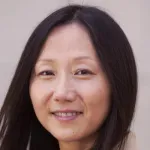
Stanford Report - February 4th, 2009 - by Maxine Lym
The Global Climate and Energy Project (GCEP) at Stanford has broadened and accelerated access to its technology-patent rights and added more research activities to its portfolio under a revised agreement with its sponsors—ExxonMobil, GE, Schlumberger and Toyota.
"By opening access earlier to technologies patented by GCEP-sponsored institutions, we believe we can work with a larger pool of institutions and researchers, and make technologies available more quickly to a wider group of potential users," GCEP Director Sally M. Benson said.
GCEP is a collaboration of the scientific and engineering communities in academia and industry. Its purpose is to conduct fundamental, pre-commercial research that will lead to the development of global energy technologies that significantly reduce greenhouse gas emissions.
GCEP and its sponsors decided to revise their original agreement from 2002 to enable broader participation in the project and greater dissemination of the project's patented technologies.
The revised agreement is posted on the GCEP website at http://gcep.stanford.edu/about/agreement.html.
Benson was recently appointed GCEP director after serving as executive director since March 2007. The previous director, Franklin M. Orr Jr., leads Stanford's newly announced Precourt Institute for Energy. GCEP is now affiliated with this institute, which was established at the university with a gift of $100 million to focus specifically on energy issues.
A hydrogeologist from Stanford's Energy Resources Engineering Department, Benson studies how to reduce greenhouse gas emissions by capturing carbon dioxide from power plants and pumping it into deep underground formations for permanent sequestration.
Benson also announced $5.6 million in new GCEP awards for five full-term research programs and six exploratory research efforts being conducted at Stanford and other institutions around the world in the areas of solar energy, carbon capture and storage, and biomass energy.
The new full-term activities bring the total number of GCEP-supported research programs to 63, with funding of $85.7 million committed since the project's launch in the fall of 2002.
Stanford faculty members lead three of the new activities, which address novel approaches to the conversion of solar energy. These efforts include the investigation of:
- Improved electrodes for solar cells led by Zhenan Bao, associate professor of chemical engineering;
- Enhancement of thermionic emissions processes led by Nick Melosh, assistant professor of materials science and engineering, and Zhi-Xun Shen, the Paul Pigott Professor in Physical Sciences and director of the Stanford Institute for Materials and Energy Sciences; and
- High-efficiency thermo-photovoltaic cells led by Shanhui Fan and Peter Peumans, both faculty members in the Department of Electrical Engineering, in collaboration with Paul Braun of the University of Illinois at Urbana-Champaign.
"We are very excited to begin work developing a class of materials that can harvest both photon and thermal energy to greatly improve solar thermal conversion efficiencies," Melosh said. "GCEP provides a unique vehicle for allowing us to conduct this type of research."
Investigators at the Research Institute of Innovative Technology for the Earth (RITE) in Japan will follow up on their previous GCEP research on carbon dioxide separation with new, improved approaches to membrane design.
The four GCEP sponsors plan to invest a total $225 million over a decade or more in the project.
"Adding a wide range of exciting new efforts to its research portfolio, collaborating with top researchers from Stanford and around the world, and making its patented technologies widely accessible are three significant steps GCEP is making to accelerate the science that will enable a future with significantly lower greenhouse gas emissions," said Ashok Belani, chair of the GCEP Management Committee and chief technology officer of Schlumberger Ltd.


